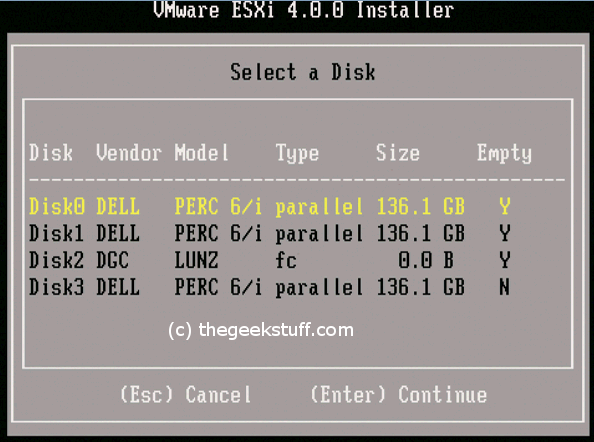고정 헤더 영역
상세 컨텐츠
본문

Hello,THANK YOU for the detailed instructions. I have learned a LOT from them. However, I still have issues.In Step 12, you have the bootable flag set on. That makes sense, but my install will not allow me to set it to ‘on’ for ‘Physical Volume for RAID’.If I configure the partitions as Ext3 I can set the bootable flag to ‘on’.However, when I get the RAID complete, and continue the install, it fails to load GRUB2, because it is trying to install to /dev/sda instead of /dev/md0. I do not see an opportunity to tell it otherwise.Any ideas?Thanks.
Esxi Raid Controller Compatibility
I'm trying to setup and install Ubuntu on a RAID 1 setup. I have two disks, sdb and sdc. I've been following this guidewhich more or less works for getting everything set up and Ubuntu installed. The problem is at the end of the installation, it tries to install GRUB.
By default it tries my 'first disk', which gives a 'fatal error'. I've tried installing it on a specific partion, e.g. Sdb1 as well as RAID devices, e.g.
Md0, md1, etc. Nothing seems to work.The actual error isUnable to install GRUB in /dev/sdbExecuting 'grub-install '/dev/sdb' failed.This is a fatal error.Then I'm taken back to the main install menu. If I choose 'Install the GRUB boot loader on a hard disk' option, I can pick the partition, but entering sdb2 or md1 gives the same error.So I went ahead an just didn't install GRUB, which means now I presumably have a working Ubuntu installation, but I can't boot it. I've tried booting from the LiveCD to install GRUB, but I can't chroot into my system because it doesn't seem to recognize that my disk is a Linux disk. There's an error about it being a RAID partition.So basically I would really like to know how you know to which device to install GRUB at installation, or at the very least, how to install it on to my system now.I suppose I should also mention that sda is a Windows 7 installation that I would like to keep around and be able to access at boot.Thanks for any help. I managed to get it working by creating three partitions on each drive, RAIDing two sets together for the filesystem and swap and leaving the last two unRAIDed.
Vmware Esxi Software Raid

Then I selected /boot as a mount point for one of them, and picked that one when installing GRUB. This seems to work. My only concern is that GRUB isn't installed on the other drive, so if I have a drive failure, I may not be able to boot.
Perhaps I can fix this by installing GRUB on the other drive, despite the fact that that partition isn't set as a /boot mount point?–May 18 '11 at 0:26. My problem turned out to be that I had GUID partition table since my drives were 2TB each. The method I originally tried to follow didn't assume this, and so installing GRUB didn't work.Instead, you should make a small (1MB) partition on each disk and RAID them together and set it as a GRUB boot partition (I'm not sure of the actual name). Set up your other RAID partitions (e.g. Swap and /) and then the GRUB installer should find the boot area just fine.(On Debian this is called a reserved BIOS boot area.). A slight variation on @root45's recipe got me going (on an Ubuntu-only system). I didn't make the bootable partition part of the Raid array.I created a small bootable GRUB partition (I chose the partition editor's option: 'use is 'bootgrub' or something similar) and did not make it part of the Raid device along with the swap and data (/) partitions.You can rewrite the Grub2 data to the 'bootgrub' partition at any time.
Software Raid Download
As indeed the installation process will, on your behalf, when given the choice after all your selected packages have been installed; or at any time later if corrupted with grub-install /dev/sda changing the 'sda' to the device of the partition you used in 'step one' above to be 'used as 'bootgrub'.If you choose to cause the installing of the many packages in a LAMP server, for example, it can be quite a while after partitioning before you get asked about writing the Grub2 data to the hard disk. And the defaults it offered at that time caused an error until I supplied my 'bootgrub' partition's device. And all went OK and I have a viable system now.




